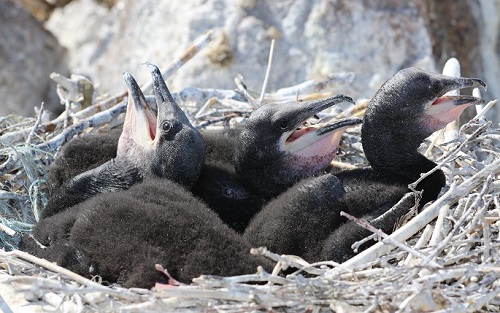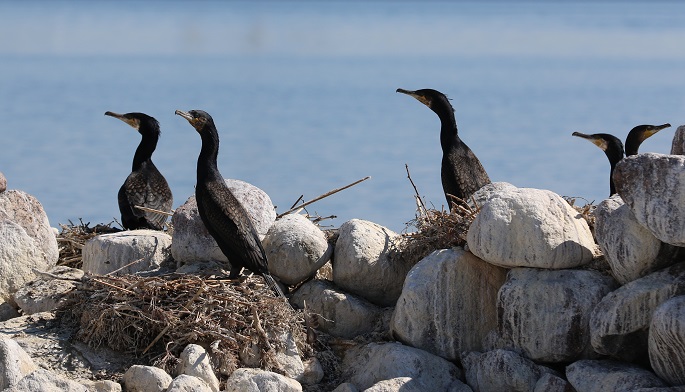Cormorant population remains unchanged
Published : 04 Aug 2017, 01:27
Updated : 04 Aug 2017, 11:51
Approximately 25,750 cormorant nests were counted in the country this summer, according to the Finnish Environment Institute.
Although the number increased slightly in marine areas, it decreased in the Gulf of Finland, which kept the total number almost unchanged compared to the previous summer.
The figure indicates that the cormorant population in Finland’s marine areas only grew by one per cent, or a little over 200 nests, from the previous year, despite the better-than-average weather conditions in the species’ wintering areas.
It is likely that the cormorant population is about to reach its natural peak in Finland. The greatest change was the transfer of a largish colony from Kvarken to the northern Bothnian Sea.
 Most of Kvarken’s Mustasaari colony, which was illegally disturbed at the early stages of nesting, probably moved to nest in a three-year-old colony in Närpiö. The size of the colony almost tripled from the previous year to some 2,610 nests. As a whole, the population in the Gulf of Bothnia remained roughly unchanged from the year before, comprising about 11,630 nests of which 7,120 were found in the Bothnian Sea, 3,890 in Kvarken, and 620 in the Bothnian Bay.
Most of Kvarken’s Mustasaari colony, which was illegally disturbed at the early stages of nesting, probably moved to nest in a three-year-old colony in Närpiö. The size of the colony almost tripled from the previous year to some 2,610 nests. As a whole, the population in the Gulf of Bothnia remained roughly unchanged from the year before, comprising about 11,630 nests of which 7,120 were found in the Bothnian Sea, 3,890 in Kvarken, and 620 in the Bothnian Bay.
In the Gulf of Finland, the population decreased slightly to about 8,340 nests. In contrast, the population in the Archipelago Sea increased by 10 per cent to 5,790 nests, mainly due to the growth of the colonies found in Uusikaupunki and Turku.
The total number of cormorant colonies found in Finland was 50, which is close to the number in the three previous summers. The colonies nested on 79 islets covering an area of 56 hectares, down by about 10 hectares from the previous summer.
The largest colonies were found in Uusikaupunki (2,840 nests) and Närpiö (2,610 nests). Other colonies of more than 1,000 nests were found in Virolahti, Kirkkonummi, Turku, Rauma, Eurajoki, Pori, and Vaasa.
Of the colonies found in the summer of 2016, slightly more than one-third declined and slightly less than one-third increased. Additionally, eight colonies were abandoned and six new colonies were discovered. Of these, nesting was successful in Hanko, Raasepori and Vöyri, and partly in Rauma. It was deduced that the Hanko and Raasepori colonies were formed when a colony ousted from an island with special permission divided and began to nest on two uninhabited islands nearby.
In addition to Mustasaari, nesting was disturbed in Maalahti and Mynämäki. Nesting islets abandoned for an unknown reason during the summer were found in Rauma and Pori.


